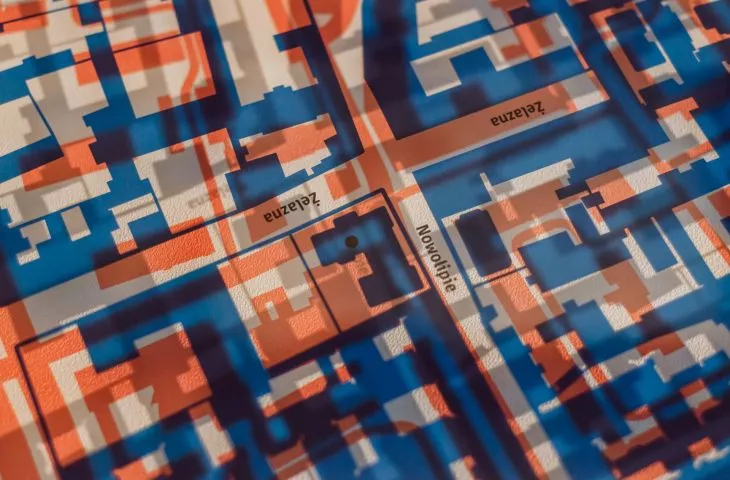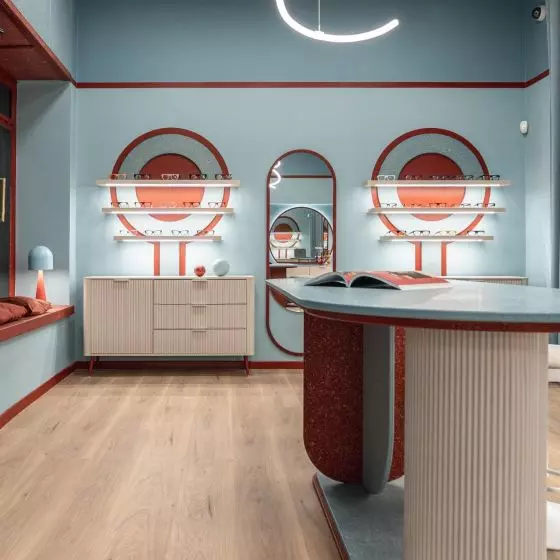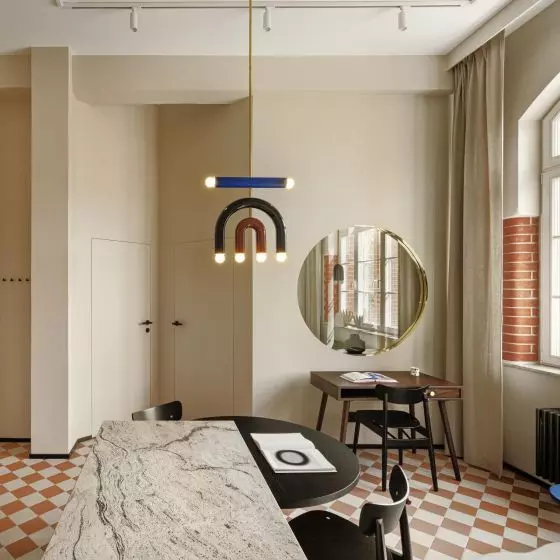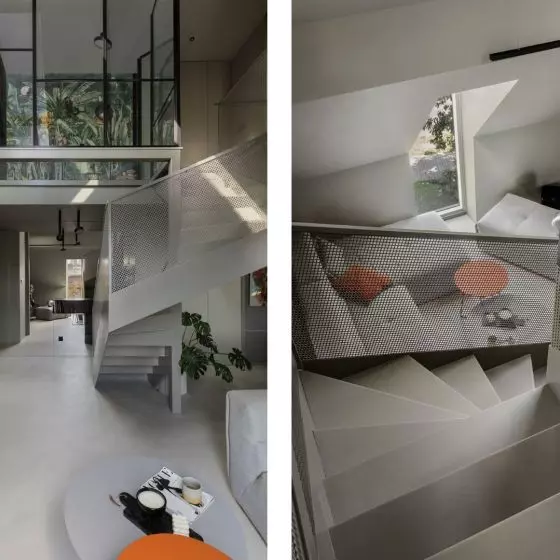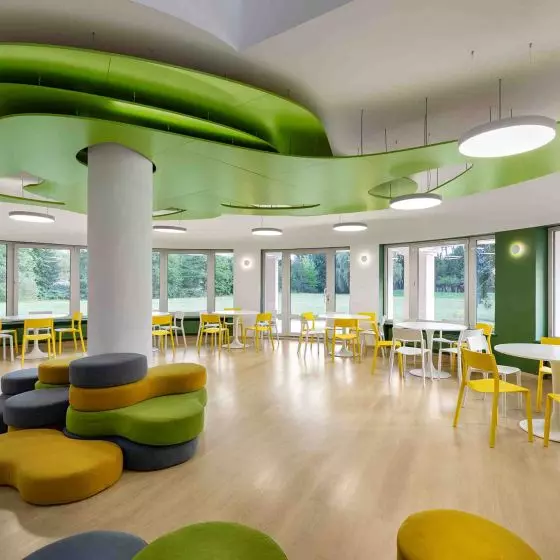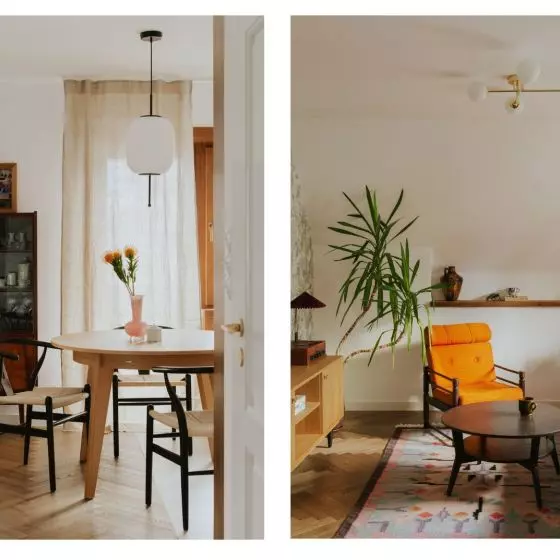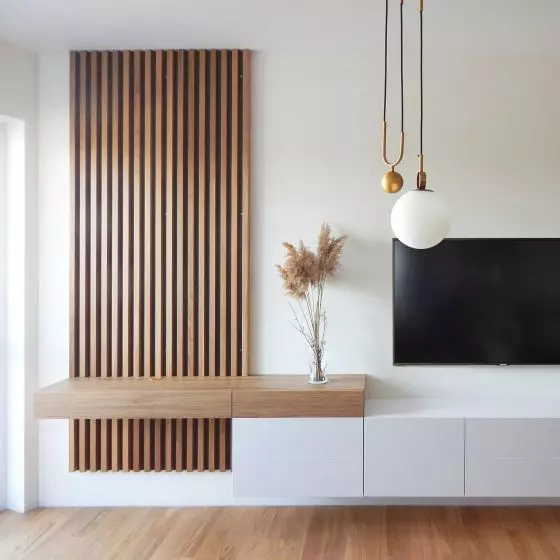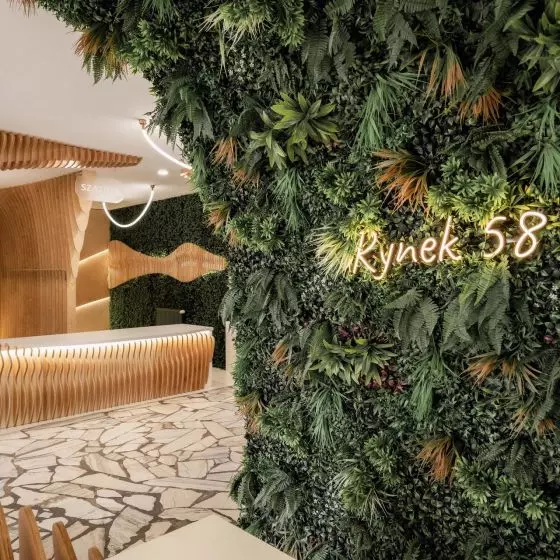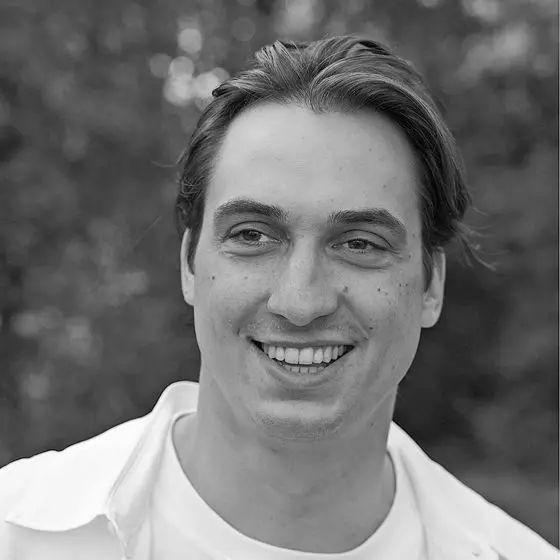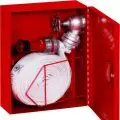As of today, we can visit museums and art galleries again! At the Museum of the History of Polish Jews POLIN , a temporary exhibition "Here Muranów" awaits visitors, which tells the story of the Warsaw housing estate and the fate of its residents. The exhibition was designed by the interdisciplinary team of the Tatemono_exhibition studio - Anna Pydo and Justyna Szadkowska, who have been running the Tatemono architectural studio since 2010, Piotr Antonow - graphic designer and Franciszek Zakrzewski - content designer.
The 


A map of Muranow in the form of two superimposed plans of the district - pre-war and contemporary
photo: Oni Studio
Ola Kloc: This is not your first exhibition, how do you approach such projects? What does your design process look like?
Anna Pydo and Justyna Szadkowska: The design work on an exhibition can usually be divided into two stages. The first, when we prepare an author's concept based on a sketch of the exhibition scenario. It includes the general layout of the exhibition, the path of the tour and the basic artistic assumptions. Most often, projects are selected on the basis of competitions in which invited studios participate. Once the competition is decided in our favor, we proceed to detail the concept. At this stage we work in close contact with the team of exhibition creators. Our task is to translate their visions into concrete spatial solutions. In the case of the "Here Muranów" exhibition, at organized meetings we discussed the scenario, the selection of factual materials and methods of presentation. The substantive team formed by Professor Jacek Leociak, Beata Chomątowska, Kamila Radecka-Mikulicz and Anna Miczko showed great flexibility in transforming the substantive concept into an art project. The trust they placed in us was due, among other things, to the fact that our team included not only architects and a graphic designer, but also Franciszek Zakrzewski, who was responsible for interpreting the substantive content. Thanks to the deep thought given to the message of the exhibition and the attention given to the materials provided, the exhibition set design not only serves to present the content in an accessible way, but also carries meanings in itself.
Ola: How can an exhibition's reception by viewers be influenced by its arrangement?
Anna and Justyna: We believe that the set design of an exhibition determines its reception by viewers. The author of the concept of the "Here Muranów" exhibition, Professor Jacek Leociak, said very nice words to us during its virtual tour:
Work on the exhibition is such a collective, creative effort. The concept is incorporeal and would not have been realized if not for the designers of this exhibition....
In the case of the "Here Muranów" exhibition, while looking for the right form for the substantive message, we tried to avoid literalism and overwhelming symbolism. The overarching metaphor of the Muranów exhibition as a palimpsest, on which successive layers of history are overwritten, is present both in the structure of the exhibition and in the solutions of its individual elements. On a general level, the logic of visiting the exhibition is based on discovering successive layers of history, to which color codes are assigned. The visitor moves both from the present to the past and in the opposite direction.



each of the locations has its post in a form referring to the announcement poles
photo: Oni Studio
Another of the treatments that helps to make the multi-layered nature of Muranów apparent is the overlapping of the district 's pre-war and post-war plans. We applied it both in the prologue to the exhibition, where we present the entire district in two interpenetrating time plans, and when discussing individual locations. With regard to Nalewki, the now defunct street that was the backbone of pre-war Muranów, the juxtaposition of contemporary and historical perspectives is somewhat more metaphorical. The installation evoking historic Nalewki intersects with the film projection presented above of a contemporary recorded drone flight over the pre-war course of the street. The lack of parallelism between the elements reinforces the sense of incompatibility of street layouts from different eras.
Thewindow in the temporary exhibition hall plays a special role in the layout of the exhibition. Not only is it, an important element of the building's architecture, but it also takes on the function of a stand, a showcase-lens, in which we see Muranów on a 1:1 scale. Thus, the relationship between the exhibition and its protagonist is emphasized. Muranow enters the interior of the building and makes visitors realize that the exhibition and museum are rooted in the district.
The 


part of the arrangement is a window overlooking the Ghetto Heroes Monument
photo: Oni Studio
The fragments of objects excavated from the site where the POLIN Museum stands today, presented in the exhibition, are of extraordinary value to the entire exhibition, they are its tangible essence. For this reason, we decided to set up a table across from the entrance, on which the personal items of the district's pre-war residents are presented. On purpose, the table has a crude and simple form, as the objects do not require additional commentary. We wanted to bring visitors into direct contact with the objects, so we avoided placing them in classic museum display cases. Instead, we covered them with lightweight lampshades.
Initially, the archaeological artifacts were to be presented only on a table. However, after seeing the archaeological collections in the museum's warehouse, we concluded that they needed to ring out in the exhibition. We proposed to devote a separate place to them in the exhibition. A long display case was created, which allowed more artifacts to be presented. Despite its capacity, it does not dominate the rest of the exhibition. Its surprising cobalt interior and slightly inaccessible form, which forces the viewer to look inside, give a sense of discovering a hidden treasure, which is precisely what these fragments of objects from the pre-war residents of Muranów are.



long display case
photo: Oni Studio
Ola: Temporary exhibitions are dismantled at the end of their exhibition time, when designing the arrangement of the exhibitions, choosing materials for their construction, do you think about whether and how they can be reused? Can something realistically still be done with them?
Anna and Justyna: Temporary exhibitions are important events for cultural institutions. They are often prepared for years, which visitors are often not aware of, they are created with a lot of work and money, and a lot of materials are used to build the scenery.
We are very pleased that more and more attention is being paid to what the scenery will be made of and what part of the material can be disposed of. At Tatemono_exhibitions we always design consciously, with the environment in mind. We use natural materials that recycle and recycled materials. In addition, we eliminate or simplify solutions that prove too costly for the environment. When it comes to temporary exhibition projects, it's the idea that counts, sometimes with simple means you can achieve the desired effect. At the same time, we design in a way that makes it possible, to use the elements of the exhibition after the end of the exhibition. Of course, there are also times when exhibits require dedicated solutions due to conservation and safety requirements.
The 


construction symbolically reminds of non-existent Nalewki Street
photo: Oni Studio
At the "Tu Muranów" exhibition, all elements of the structure and substructure were made of wood. The foam furniture is to be used after the exhibition closes, as are the plexiglass lampshades and the table behind the books. We hope that the other elements will also be used for future exhibitions.
Ola: Thank you for the interview!






